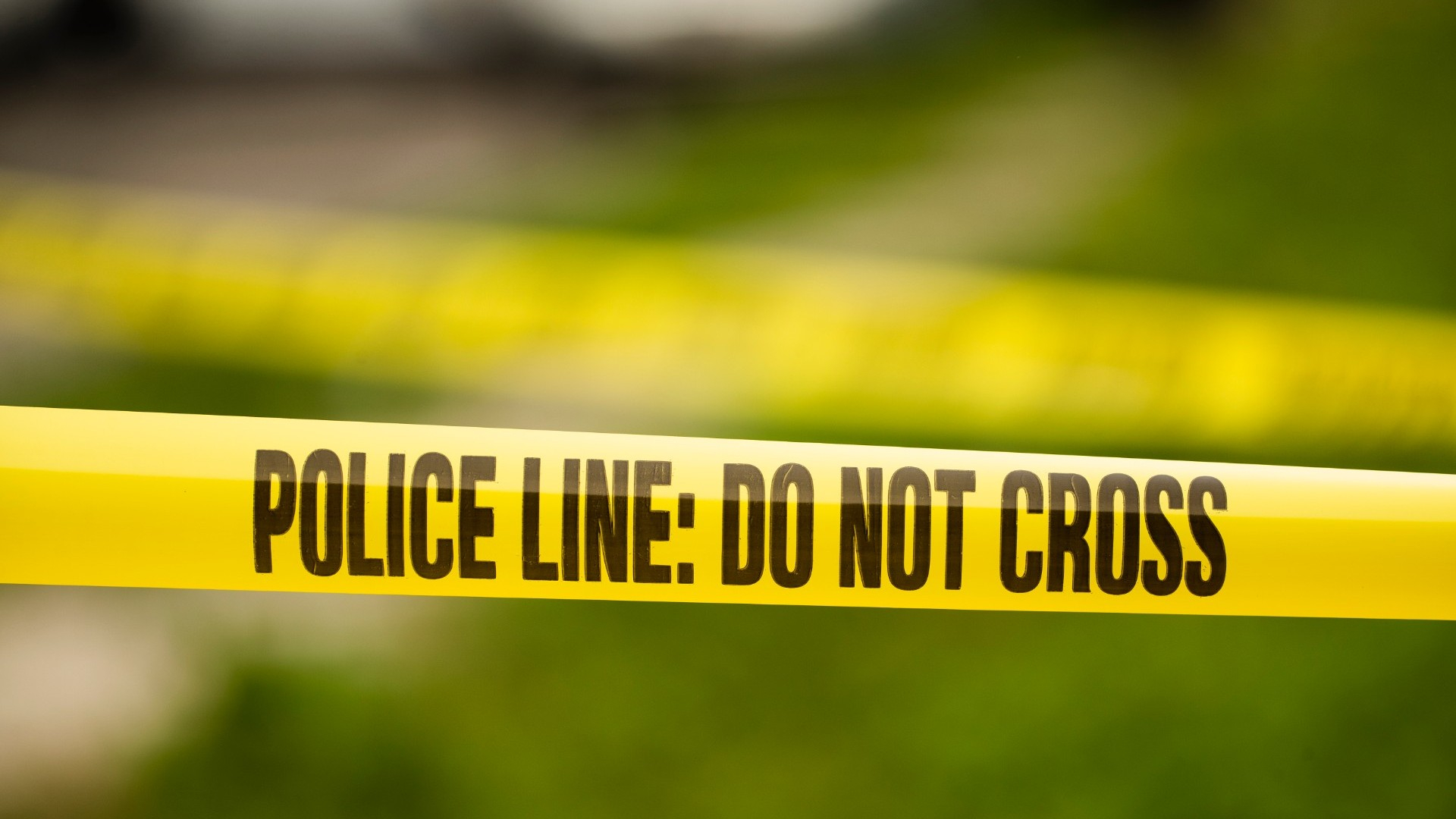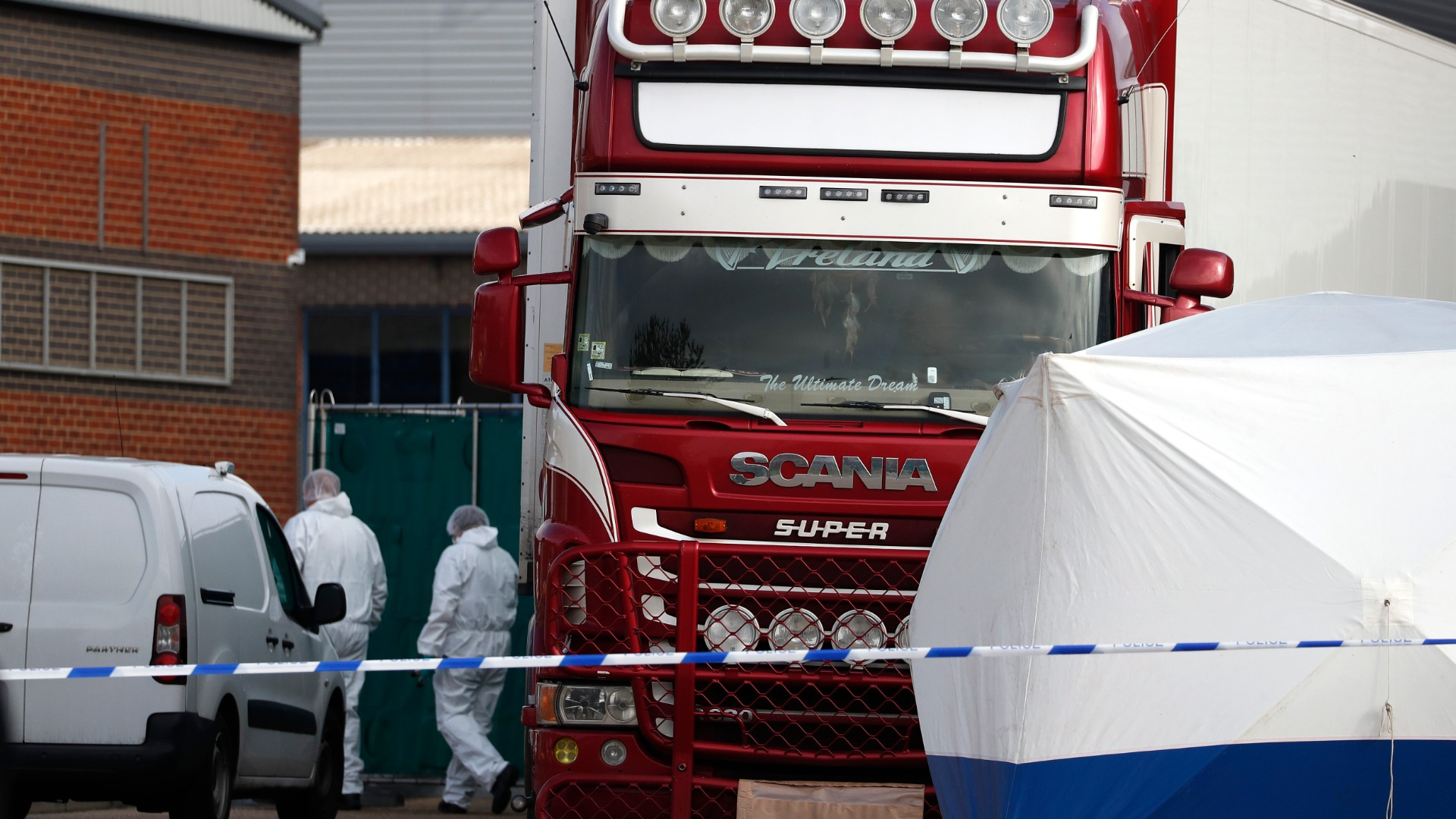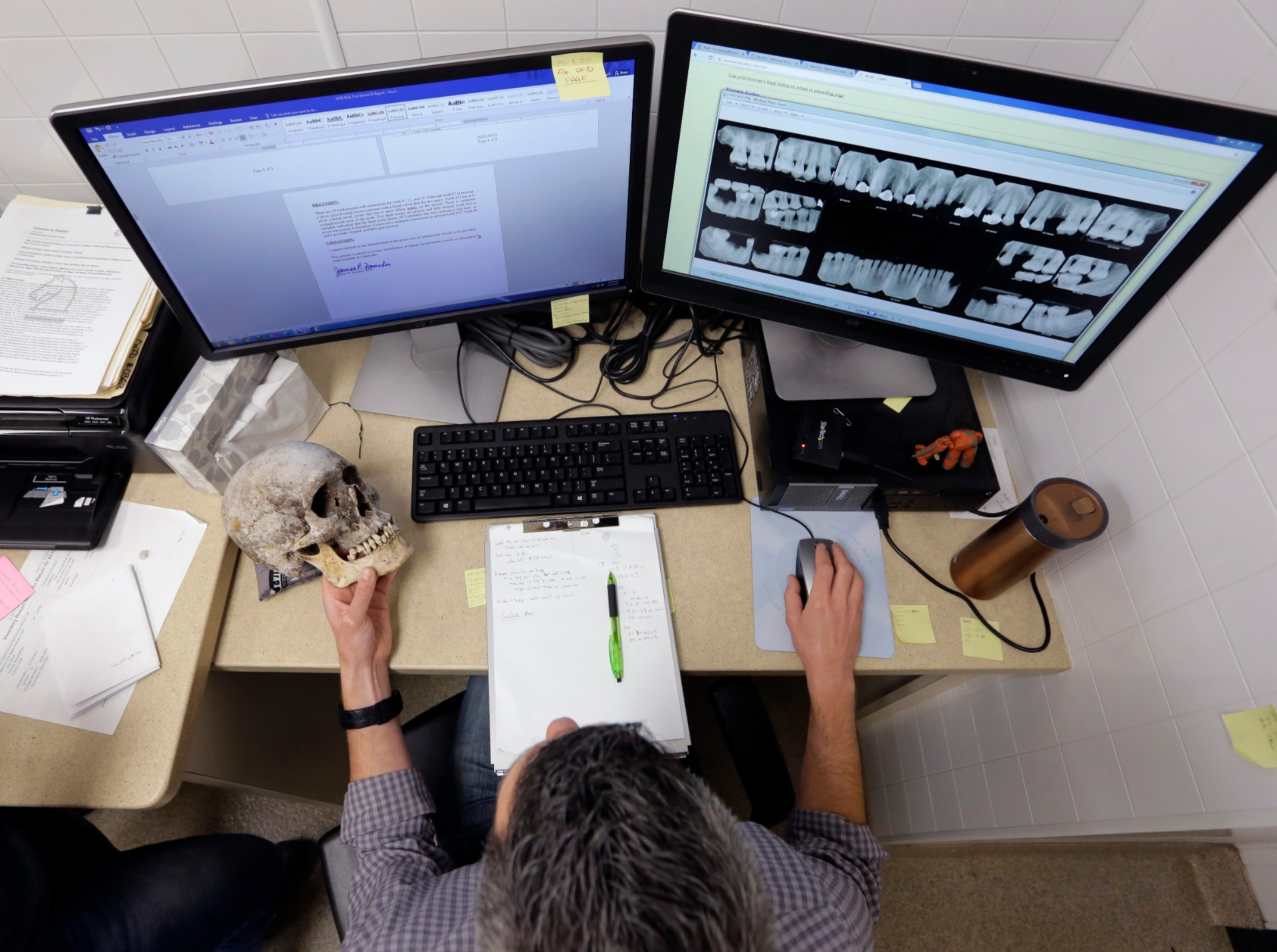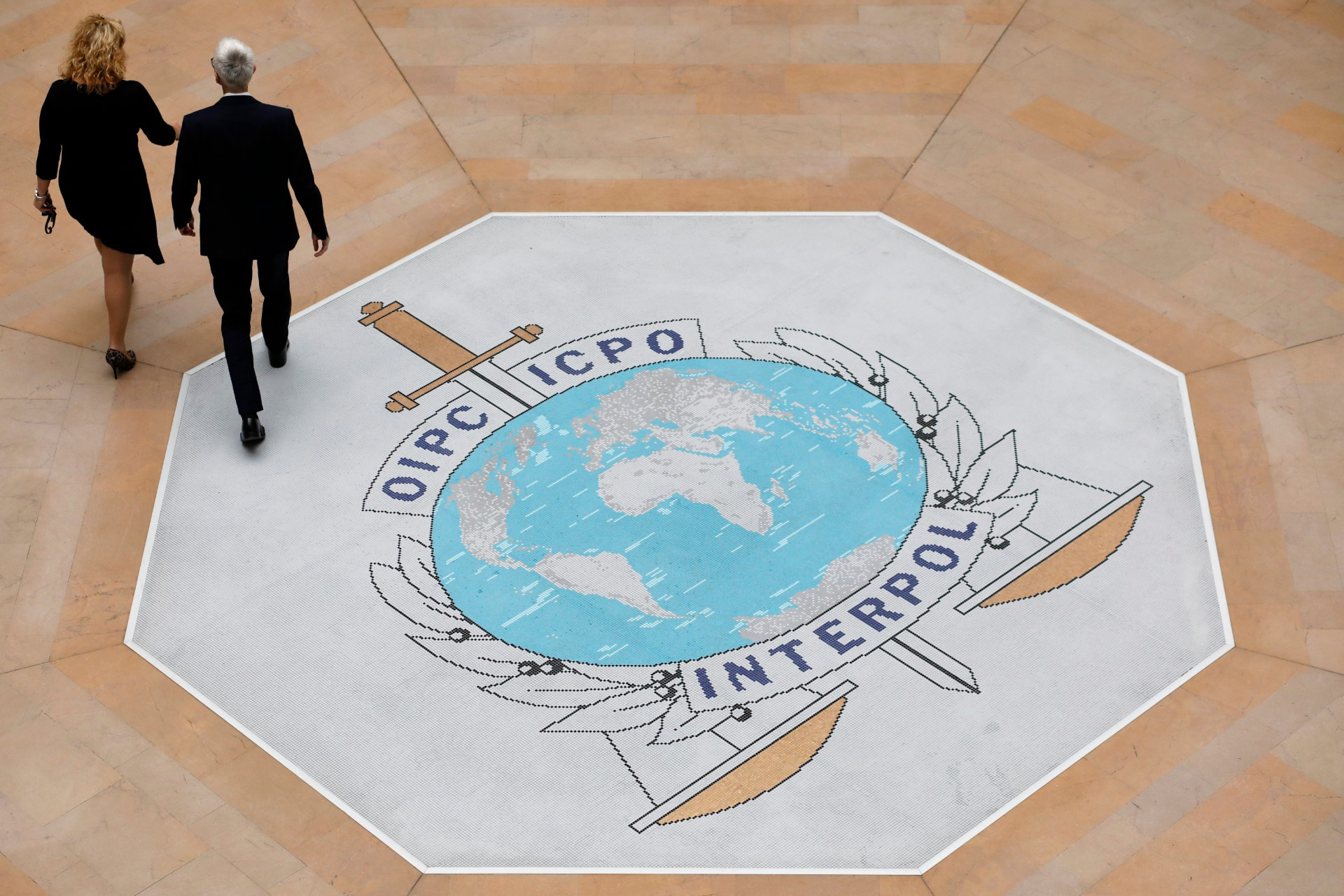
Behind the lines, the police will be setting to work (Credit: AP Photo/Matt Rourke)
Behind the lines, the police will be setting to work (Credit: AP Photo/Matt Rourke)
Whenever the authorities are alerted to the discovery of a body of unknown origin, they have a series of ways to help solve the mystery - if not the crime. These apply whether it's a suspected murder or an accidental death, and whether it's a sole body or multiple victims - as in the tragic case of the truck discovered in the UK containing 39 bodies, believed to be Chinese people.
Read more: Thirty-nine found dead in UK truck believed to be Chinese nationals
As Essex Police have indicated, "Each of the 39 people must undergo a full coroner's process to establish a cause of death, before we move on to attempting to identify each individual within the trailer. This will be a substantial operation and, at this stage, we cannot estimate how long these procedures will take."
But having established the cause of death, what are the procedures for identification? There are several methods which can differ from case to case, but previous investigations have followed a similar path - and as is so often the case in the modern world, it's largely about databases.

Forensic scientists investigate the truck in Essex (Credit: AP Photo/Alastair Grant)
Forensic scientists investigate the truck in Essex (Credit: AP Photo/Alastair Grant)
Missing-persons lists
The first option is frequently a missing-persons list; if the police have any leads on where the person might be from, they will check the missing persons reports from the nearby area.
Self-evidently, this is much easier when the deceased is reasonably suspected to be from a small town rather than from a huge country. Sifting through the missing-persons list from Essex would be quite quick, but doing the same for China would take much longer.
However long it takes, if the authorities believe they have found a match, they'll attempt to locate family members to come and confirm the identity. Again, this can take a long time if the family lives far away.

Only partial fingerprints are required, but they need something to match to (Credit: AP Photo/Charlie Neibergall)
Only partial fingerprints are required, but they need something to match to (Credit: AP Photo/Charlie Neibergall)
Fingerprints
If the investigators get no matches on missing-persons lists, then they'll check fingerprints to see if the deceased is on any databases.
Fingerprint identification - also known as dactyloscopy (daktylos is Greek for finger) - has been used for thousands of years: in ancient China, government officials authenticated documents with their fingerprints as far back as the second millennium BCE. The use of fingerprints in criminal enquiries began in the late 19th century, and since early in the 20th century, various law enforcement agencies around the world have been collating fingerprints into searchable databases.
There are, again, problems here. Fingerprinting is not quite as reliable as was previously considered, and can be difficult depending on the condition of the bodies: the skin dries and cools after death, sometimes hampering identification.
Furthermore, only a minority of the world's population are on fingerprint databases. These were initially established, and are primarily still used, for criminal investigations. Not everybody is on the databases, because not everybody is a criminal.

Fingerprint tehcnology - and its portability - is improving (Credit: AP Photo/Seth Perlman)
Fingerprint tehcnology - and its portability - is improving (Credit: AP Photo/Seth Perlman)
However if, for example, you have entered the USA in the last few years and had your prints scanned during immigration, they will be on the FBI's database. Other countries operate similar systems, so the sample size is continually growing.
These databases can have practical applications outside criminal investigations. For example, the FBI's Integrated Automated Fingerprint Identification System (IAFIS) can be used to flag up potential matches - the final forensic identification is always made by a certified examiner.
The FBI has portable IAFIS terminals which can be taken to disaster scenes: they were deployed in Thailand after the 2004 tsunami disaster. The magnitude of the task - identifying thousands of people who could have come from anywhere in the world to this popular tourist destination - inspired a worldwide effort to share identification records, but it is still a huge task to match those records.

Teeth can be checked against existing dental records - if they exist (Credit: AP Photo/Eric Gay)
Teeth can be checked against existing dental records - if they exist (Credit: AP Photo/Eric Gay)
DNA, dentistry and more databases
From there, the search can go in different directions, each presenting possibilities and drawbacks. It's possible to widen the scope of the missing-persons search, but this will necessitate much more processing: the wider the scope, the more false returns to sift through.
The search may be narrowed somewhat if there are identifying specifics like a tattoo, scar or unusual physical characteristic - or indeed anything internal discovered by autopsy, such as prosthetic joints or pacemakers - but again these are the exception rather than the rule.
The authorities may consider releasing photographs of the deceased, but while this is an effective means of reaching a large number of people who may be able to aid identification, it's fraught with ethical concerns.
Dental records are often mentioned, but again they rely on the existence of antemortem evidence, and are generally only used to confirm an identity rather than narrow down the possibilities. They tend to be something of a last resort when the facial and fingerprint characteristics are unclear, due to the condition of the body.

Interpol has a DNA database nearing 200,000 profiles - but largely restricted to criminals (Credit: AP Photo/Laurent Cipriani)
Interpol has a DNA database nearing 200,000 profiles - but largely restricted to criminals (Credit: AP Photo/Laurent Cipriani)
Then there is DNA profiling. DNA evidence isn't quite the catch-all solution frequently portrayed in TV police dramas: it's brilliantly useful in certain circumstances but again limited in scope.
It can be a fast and efficient method of confirmation if authorities have a suspected identity, by matching a relative's DNA with a sample taken from the deceased (usually the upper leg). DNA collection was used after the MH17 airplane crash of 2014, providing informative genotyping results for 98 percent of the 298 victims.
Again, though, there is the problem of database limitation. Created in 2002, Interpol's DNA database has more than 180,000 profiles submitted by 84 member countries, but these are also largely restricted to suspected or convicted criminals. However they try to identify the victims, the authorities face a huge task.